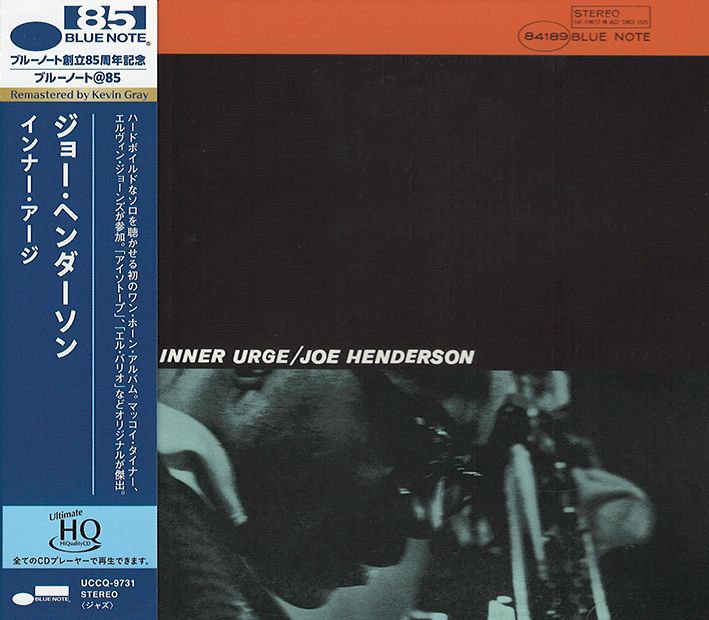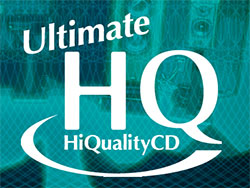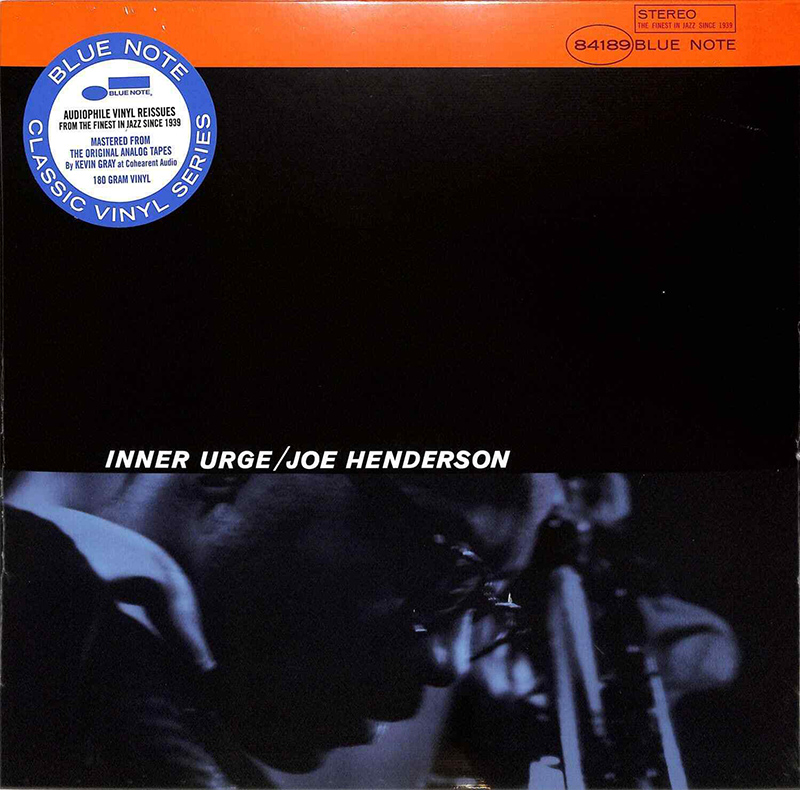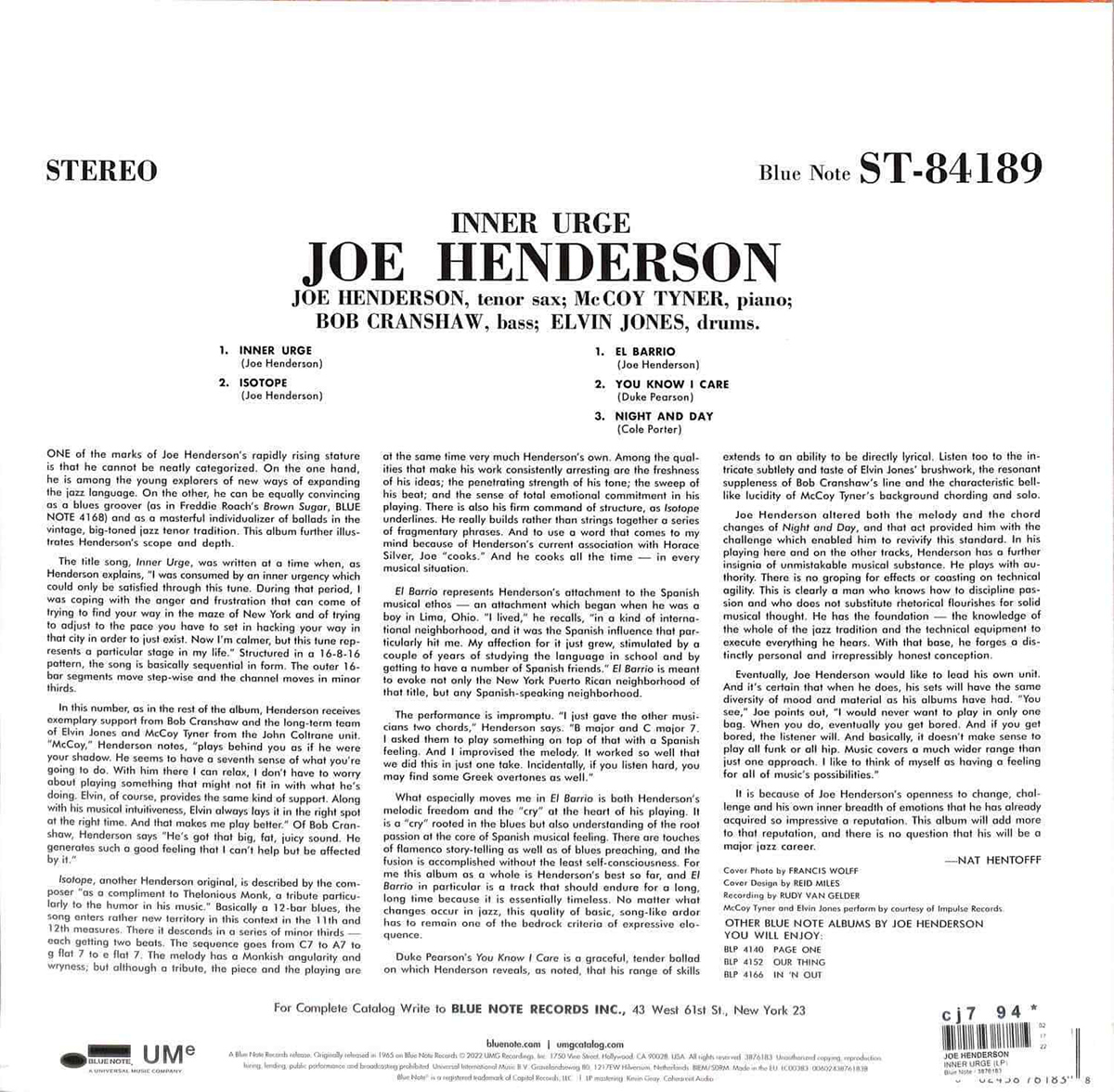Logowanie
Mikołaj - ten to ma gest!
Elton John, The Mamas & The Papas, Cat Stevens, Rod Stewart, Bobbie Gentry, Stevie Wonder, Engelbert Humperdinck
Memory Lane
Edycja Numerowana - 1000 egzemplarzy w skali światowej
RACHMANINOV, Eiji Oue, Minnesota Orchestra
Symphonic Dances / Vocalise
Best Recordings of 2001!!! NAJCZĘŚCIEJ KUPOWANA PŁYTA Z RR!
Karnawał czas zacząć!
Music of Love - Hi-Fi Latin Rhythms
Samba : Music of Celebration
AUDIOPHILE 24BIT RECORDING AND MASTERING
CHOPIN, LISZT, DEBUSSY, DVORAK, Gerhard Oppitz
Dances romantiques - A fantastic Notturno
Wzorcowa jakość audiofilska z Clearaudio
Winylowy niezbędnik
ClearAudio
Double Matrix Professional - Sonic
najbardziej inteligentna i skuteczna pralka do płyt winylowych wszelkiego typu - całkowicie automatyczna
Joe Henderson, McCoy Tyner, Bob Cranshaw, Elvin Jones
Inner Urge

UHQCD - dotknij Oryginału
Inner Urge Review by Daniel Gioffre [-] This early recording by Joe Henderson is not only one of the finest of all of his recordings, but is also a high point for 1960s jazz. At this point in his career, Henderson was a full-time member of Horace Silver's combo and did not yet have a steady band in his hire. He is joined on Inner Urge by veterans of other combos: McCoy Tyner and Elvin Jones from John Coltrane's unit and Sonny Rollins sideman Bob Cranshaw. The presence of these luminaries aside, Inner Urge is home to two of Henderson's best (and best-loved) compositions: "Inner Urge" and "Isotope." The leader's solo on the title track is a marvelous thing, full of melody as well as anarchic bursts of sound, which is in perfect keeping with the spirit of the song's probing, searching theme. The other musicians support Henderson nicely as well as turning in some strong solos of their own. Tyner especially sounds fantastic on this record. Although not the equal of the leader in terms of the quality of his lines or the overall sense of composition of his solos, his performance is at least the rival of Henderson's in terms of raw kinetic power. The other great song on "Inner Urge," the Monk-ish "Isotope," is another ideal showcase for Henderson's total command of his instrument. The remaining tracks on Inner Urge are also fantastic, especially the wailing cry of "El Barrio" and the Henderson-altered head to "Night and Day," but the first side, even if taken alone, is by itself enough to guarantee this album as perhaps the best Henderson recorded in his long and illustrious career, and stands easily alongside the best records of the era.
 Najnowszy format płyt CD, pozwalający w stopniu dotychczas niespotykanym przekazywać oryginalne, naturalne brzmienie zapisu studyjnego. Płyty UHQCD do odtworzenia we wszystkich typach czytników CD oraz DVD. Format opracowało znane japońskie laboratorium rekonstrukcji i masteringu dźwięku Memory-Tech Co., Ltd. |































